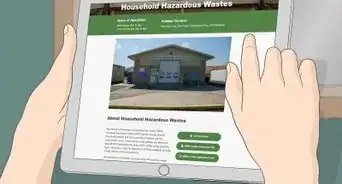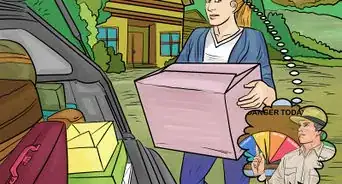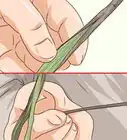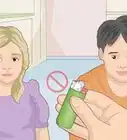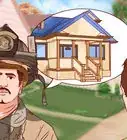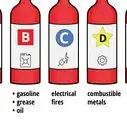This article was co-authored by wikiHow staff writer, Amber Crain. Amber Crain has been a member of wikiHow’s writing staff for the last six years. She graduated from the University of Houston where she majored in Classical Studies and minored in Painting. Before coming to wikiHow, she worked in a variety of industries including marketing, education, and music journalism. She's been a radio DJ for 10+ years and currently DJs a biweekly music program on the award-winning internet radio station DKFM. Her work at wikiHow supports her lifelong passion for learning and her belief that knowledge belongs to anyone who desires to seek it.
wikiHow marks an article as reader-approved once it receives enough positive feedback. This article has 11 testimonials from our readers, earning it our reader-approved status.
This article has been viewed 623,535 times.
Learn more...
Grease fires are caused by cooking oil that becomes too hot. It only takes minutes for an unattended pot of oil to catch fire, so never turn your back on it! If a grease fire does erupt on your stove, turn off the heat right away. Cover the flames with a metal lid or cookie sheet. Never throw water on a grease fire. If the fire looks out of hand, get your family out of the house and call emergency services.
Steps
Snuffing out the Fire
-
1Evaluate the severity of the fire. If the fire is still small and contained to one pot, it is safe to extinguish it by yourself. If it's beginning to spread to other parts of the kitchen, get everyone assembled outside and dial for emergency services. Do not place yourself in the way of harm.
- Call emergency services if you're too afraid to go near the fire or don't know what to do. Do not risk life and limb to save a kitchen.
-
2Turn off the heat on the stove immediately. This is your first priority, given that a grease fire needs heat to stay alive. Leave the pot where it is, and don't attempt to move it, as you may accidentally splash burning oil on yourself or your kitchen.[1]
- If you have time, put on an oven mitt first to protect your skin.
Advertisement -
3Cover the flames with a metal lid. Fire needs oxygen to continue, so covering it with a metal lid will essentially smother the flame. Place a metal pan lid or a cookie sheet on top of the fire. Do not use glass lids; they can shatter when exposed to fire.[2]
- Also avoid using ceramic lids, bowls and plates for this purpose. These can explode and become dangerous shrapnel.[3]
-
4Dump baking soda on small fires. Baking soda will put out small grease fires, but won't work as effectively on larger ones. It will take a large amount of baking soda to get the job done, so grab the whole box and dump it generously on the flames until they're extinguished.[4]
- Table salt will also work. If you can get your hands on that faster, use salt.
- Do not using baking powder, flour or anything other than baking soda or salt for this.[5]
-
5Use a chemical fire extinguisher as a last resort. If you have a Class B or K dry chemical fire extinguisher on hand, this can put out a grease fire. Since the chemicals will contaminate your kitchen and be tough to clean up, only do this as a last resort. However, if it's the last line of defense before the fire gets out of control, don't hesitate![6]
Avoiding Bad Procedures
-
1Never throw water on the grease fire. This is the number one mistake many people make with a grease fire. Water and oil don't mix, and throwing water on a grease fire can even cause the fire to spread.[7]
-
2Don’t swat at a fire with a towel, apron, or any other fabric. This will fan the flames and spread the fire. The fabric itself could also catch on fire. Don't place a wet towel over a grease fire to snuff out the oxygen, either.
-
3Do not throw any other baking product on the fire. Flour and baking powder may look similar to baking soda, but they won't have the same effect. Only baking soda and salt are safe and effective on a grease fire.[8]
-
4Do not move the pot or take it outside. This is another common mistake people make and it may seem logical at the time. However, moving a pot of burning oil can cause it to spill, potentially burning you and any other flammable objects it comes into contact with.[9]
Preventing Grease Fires
-
1Never leave the stove unattended when cooking with oil. Unfortunately, most grease fires happen when someone steps away just for a moment. Grease fires can happen in less than 30 seconds, though. Don't turn your back on hot grease.[10]
-
2Heat oil in a heavy pot with a metal lid. Cooking with a lid both contains the grease and cuts it off from its would-be oxygen supply. A grease fire can still erupt with the lid on the pot if the oil is hot enough, but it's far less likely to happen.
-
3Keep baking soda, salt and cookie sheets nearby. Get into the habit of making sure these items are within easy reach when you're cooking with grease. If a fire erupts, you'll have at least three different ways to immediately snuff it out.[11]
-
4Clip a thermometer to the side to monitor oil temperature. Find out the smoking point of the particular oil you're using, then use a clip-on thermometer to monitor the temperature as you cook. If it gets to close to the smoking point, turn off the heat.
-
5Watch for smoke and be aware of acrid smells. If you see wisps of smoke or smell something acrid while you're cooking with oil, immediately turn down the heat or remove the pot from the burner. The oil won't immediately catch fire once it starts smoking, but smoke is a danger sign that it's getting close to that point.[12]
Community Q&A
-
QuestionMy cooking pot caught on fire and I put a glass lid on it to extinguish the flames. Is it now safe to remove the lid?
 Community AnswerWait at least 45 minutes to be safe. Call 911 if you are afraid to take it off. For future reference, don't use a glass lid if you can help it; the glass could heat up and shatter.
Community AnswerWait at least 45 minutes to be safe. Call 911 if you are afraid to take it off. For future reference, don't use a glass lid if you can help it; the glass could heat up and shatter. -
QuestionWhat can I use to put out a grease fire that is on the burner?
 Community AnswerTurn the stove off first, then cover the fire with a metal pot lid. Since fire can't exist without oxygen, this will extinguish the grease fire. If it's a smaller one, you can try using baking soda. Avoid using water, as it will just make the oil/grease spread.
Community AnswerTurn the stove off first, then cover the fire with a metal pot lid. Since fire can't exist without oxygen, this will extinguish the grease fire. If it's a smaller one, you can try using baking soda. Avoid using water, as it will just make the oil/grease spread. -
QuestionHow do I put out a grease fire if it is on a person?
 Community AnswerTell the person to Stop, Drop, and Roll.
Community AnswerTell the person to Stop, Drop, and Roll.
Things You'll Need
- Metal lid or cookie sheet
- Baking soda or salt
- Oven mitts (optional)
- Class B or K Dry Chemical Fire Extinguisher (optional)
References
- ↑ https://www.thekitchn.com/kitchen-safety-how-to-put-out-138233
- ↑ https://www.thekitchn.com/kitchen-safety-how-to-put-out-138233
- ↑ https://www.bobvila.com/articles/how-to-put-out-a-grease-fire/#.WYTKu-mQzIU
- ↑ https://www.thekitchn.com/kitchen-safety-how-to-put-out-138233
- ↑ https://www.bobvila.com/articles/how-to-put-out-a-grease-fire/#.WYTKu-mQzIU
- ↑ https://www.thekitchn.com/kitchen-safety-how-to-put-out-138233
- ↑ https://www.thekitchn.com/kitchen-safety-how-to-put-out-138233
- ↑ https://www.thekitchn.com/kitchen-safety-how-to-put-out-138233
- ↑ https://www.thekitchn.com/kitchen-safety-how-to-put-out-138233
About This Article
To put out a grease fire in your kitchen, turn the heat off as soon as possible and cover the pan with a lid to cut off the oxygen supply. If the fire is small, pour salt or a whole box of baking soda onto the flames until they are extinguished. Since chemical fire extinguishers will contaminate your kitchen and are hard to clean up, only use them as a last resort. Instead, don’t hesitate to call emergency services if the fire is spreading or you are afraid to go near it. Scroll down to learn how to prevent grease fires.
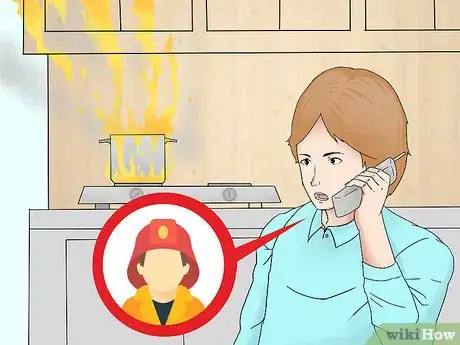
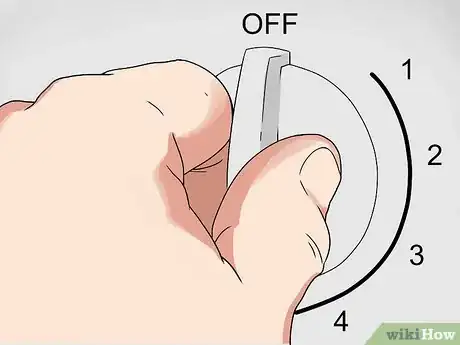
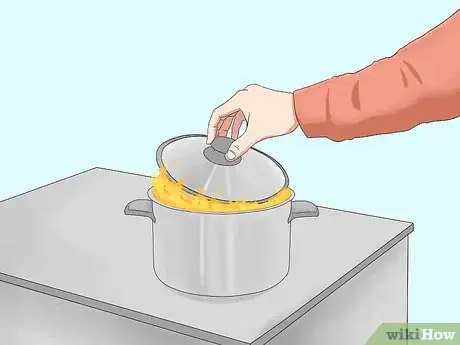

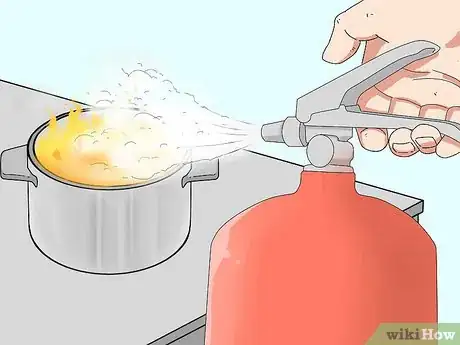





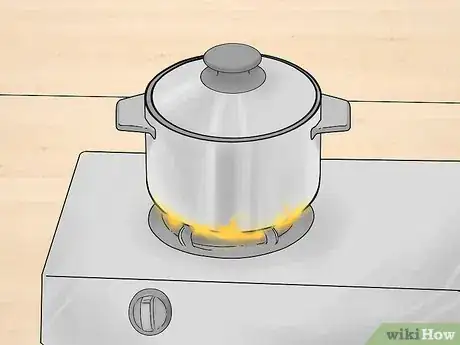

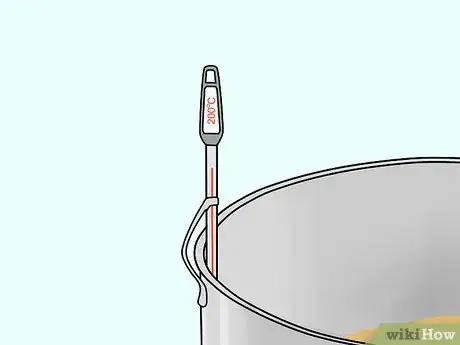
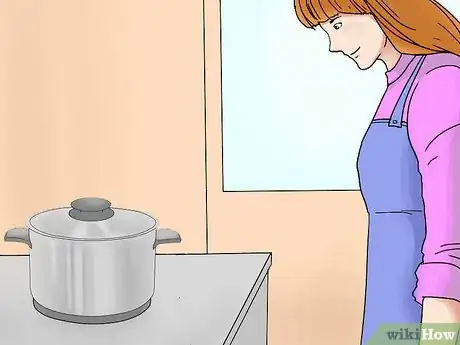
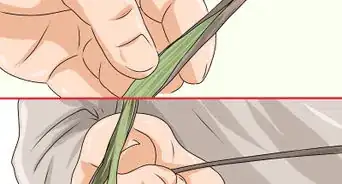
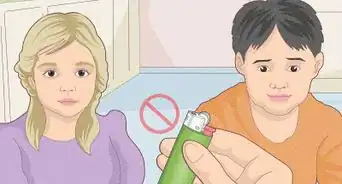
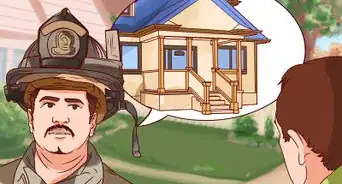

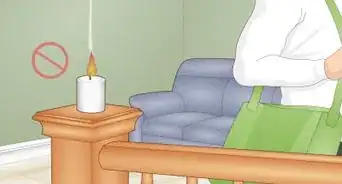




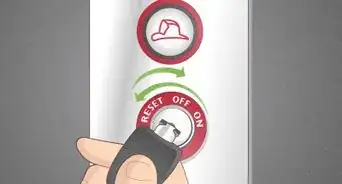
-Step-11-Version-2.webp)
